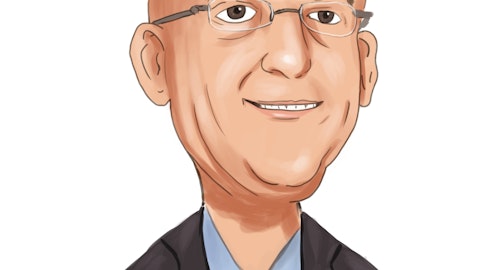In this article, we discuss 5 most popular green energy stocks among elite hedge funds. If you want our detailed analysis of these stocks, go directly to 10 Most Popular Green Energy Stocks Among Elite Hedge Funds.
5. Sunrun Inc. (NASDAQ:RUN)
Number of Hedge Fund Holders: 31
Sunrun Inc. (NASDAQ:RUN) is an American company that manufactures solar panels and batteries for residential applications, headquartered in San Francisco, California.
Sunrun Inc. (NASDAQ:RUN) announced on February 17 its Q4 results. The company posted a loss per share of $0.11, exceeding estimates by $0.04. Revenue over the period jumped 35.84% year-on-year to $435.23 million, surpassing market consensus by $26.27 million.
On February 18, BMO Capital analyst Ameet Thakkar lowered the price target on Sunrun Inc. (NASDAQ:RUN) to $42 from $57 but kept an Outperform rating on the shares. The analyst cited the company’s “disappointing” Q4 earnings, noting that its value generation target was below expectations. However, he still sees significant upside to Sunrun Inc. (NASDAQ:RUN) shares as demand remains very strong while being “obscured by temporary margin pressures”.
In Q4 2021, the database of elite hedge funds maintained by Insider Monkey suggested that 31 funds were bullish on Sunrun Inc. (NASDAQ:RUN), with combined stakes equaling more than $1 billion. Arrowstreet Capital held the largest stake in Sunrun Inc. (NASDAQ:RUN) as of December 31, 2021, owning 9.3 million shares worth roughly $235 million.
Here is what Horizon Kinetics has to say about Sunrun Inc. (NASDAQ:RUN) in its Q2 2021 investor letter:
“What this table did not cover is valuation. What’s expensive, what’s cheap? A good business that is too expensive is not a good investment. The most expensive business on the table is Sunrun. Sunrun is the nation’s largest residential rooftop solar panel system seller/installer. Sunrun’s valuation might also shed Thumbnail valuation.
To start at the top of the income statement, Sunrun shares trade at 10.3x revenues. The most profitable company in the S&P 500, Microsoft, trades at 13x revenues. Sunrun operates at a loss. Obviously, not only is tremendous growth anticipated, but tremendous profitability, too.
Let’s simply accept that investors have correctly anticipated Sunrun’s future success and make that the starting point for a valuation exercise.
If, 10 years from now, Sunrun is ultimately valued at 25x net income, and if today’s $9.5 billion valuation is appropriate, that would require $380 million of net income ($9,500 million ÷ 25).
Let’s say Sunrun will have the same net profit margin as the average S&P 500 company, which is 10%. That means it would need $3,800 million of sales to generate that level of earnings ($380 mill ÷ 10%).
Since sales are now $920 million, they would have to rise by 4.1x in the next 10 years. That would require annual sales growth of 15.2%.
You see how neatly that all works: investors accept the company’s 10-year, 15% annual sales growth projections, and if a 10% net profit margin and a P/E of 25x earnings are reasonable, then the company will have a $9.5 billion market cap at that time. Except that is the current price. That means a 10-year return of zero.
In order to get a 10% annualized return from the stock, Sunrun would need to be priced at a P/E of 65x its earnings 10 years from now, if at a 10% net margin. Or it would have to have some combination of lower P/E and higher growth and/or higher profit margin.
In the meantime, this is Sunrun’s recent pattern of revenue growth and profitability (the company did recently increase its estimate of installed-capacity growth in 2021 from 20-25% to a new estimate of 25% to 30%).
For the time being, Sunrun loses an extraordinary amount of money, an amount that has been getting larger. Perhaps there are economies of scale that will manifest in the future, so that it will attain profitability. Perhaps from the roughly one-half of Sunrun’s revenues that are from long-term customer service agreements that run up to 25 years. For now, though, the company would seem to require a lot of external financing, and that is one of the greatest business risks.”





